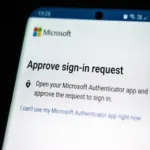Protecting Your Digital Domain: Safeguarding Against Cyber Threats in Today’s Information Age.

Readers like you help support TIPDIGITECH. When you make a purchase using links on our site, we may earn an affiliate commission. Read More.
Introduction
How to Safe Guard Against Cyber Threats? In today’s interconnected world, our digital domain is constantly at risk from cyber threats. With the rapid advancement of technology and the increasing reliance on digital platforms, it has become crucial for individuals and businesses alike to take proactive measures to protect their online presence. This article will provide an expert’s perspective on the various aspects of cyber threats and offer valuable insights into safeguarding against them. From personal opinions to practical tips, we will explore the best practices that can help you secure your digital assets effectively.
Understanding Cyber Threats: An Expert’s Perspective
Cyber threats encompass a wide range of malicious activities that aim to compromise computer systems, networks, and data. As an expert in cybersecurity, I believe it is essential for individuals to have a comprehensive understanding of these threats to defend against them effectively.
Personal Opinions on Cyber Threats
As an expert in cybersecurity with years of experience, I strongly believe that the threat landscape is constantly evolving, and cybercriminals are becoming more sophisticated in their methods. It is no longer enough to rely solely on traditional security measures; individuals and organizations must adopt a proactive and layered approach to protect their digital domain.
Importance of Education
One of the most effective ways to combat cyber threats is through education. By raising awareness about potential risks and providing training on cybersecurity best practices, individuals can become more vigilant and better equipped Against Cyber Threats to identify and mitigate them.
Regular Software Updates
Keeping your software up to date is crucial as it ensures that you have the latest security patches installed. Cybercriminals often exploit vulnerabilities in outdated software versions, making regular updates essential for safeguarding against known threats.
Strong Passwords
Using strong passwords that are unique for each online account adds an extra layer of protection against unauthorized access. A combination of uppercase and lowercase letters, numbers, and special characters should be used while avoiding easily guessable information such as birthdays or names.
Two-factor authentication (2FA)
Implementing 2FA provides an additional layer of security by requiring users to provide a second form of verification (such as a fingerprint scan or a one-time password) when logging into an account.
Backup Your Data
Regularly backing up your important data ensures that you still have access to it even if your system gets compromised or encrypted by ransomware attacks.
Use Reliable Security Software
Consider using reputable antivirus and anti-malware software specifically designed Against Cyber Threats. Keep the software definitions updated to detect the latest threats. We recommend Norton 360 Deluxe.
Frequently Asked Questions
What are some common signs that my computer may be infected with malware?
Sluggish performance
Frequent crashes or system errors
Unusual pop-up windows or ads
Unexpected changes in browser settings
How can I spot a phishing email?
Check for spelling errors or grammatical mistakes
Verify the sender’s email address
Be cautious of urgent or threatening language
Hover over suspicious links to reveal the actual URL
What should I do if I fall victim to a social engineering attack?
Immediately change your passwords for all affected accounts
Contact your bank or credit card company to report any unauthorized transactions
Educate yourself and others about the incident to prevent future occurrences
How can encryption help protect my data?
Encryption converts data into an unreadable format that can only be deciphered with a unique decryption key. This ensures that even if unauthorized parties gain access to your data, they cannot understand or use it without the decryption key.
Are there any legal implications of cyber threats?
Yes, engaging in cyber threats is illegal and punishable by law in most jurisdictions. Laws vary from country to country, but common cybercrime offences include hacking, identity theft, fraud, and spreading malware.
Conclusion
In today’s information age, protecting our digital domain is paramount. Cyber threats pose significant risks to individuals and businesses alike; however, by understanding these threats and implementing proactive security measures such as regular software updates, strong passwords, two-factor authentication (2FA), and data backups, we can significantly reduce our vulnerability.
As an expert in cybersecurity with years of experience combating cyber threats firsthand, I firmly believe that education plays a vital role in safeguarding against these risks. By staying informed about emerging trends and best practices through reputable sources such as high-quality websites like Wikipedia or specialized cybersecurity blogs/websites.
Remember: vigilance is key! Protecting your digital domain requires ongoing effort and a proactive mindset. Stay informed about the latest trends in cybersecurity and adapt your defences accordingly.
Readers like you help support TIPDIGITECH. When you make a purchase using links on our site, we may earn an affiliate commission. Read More.








